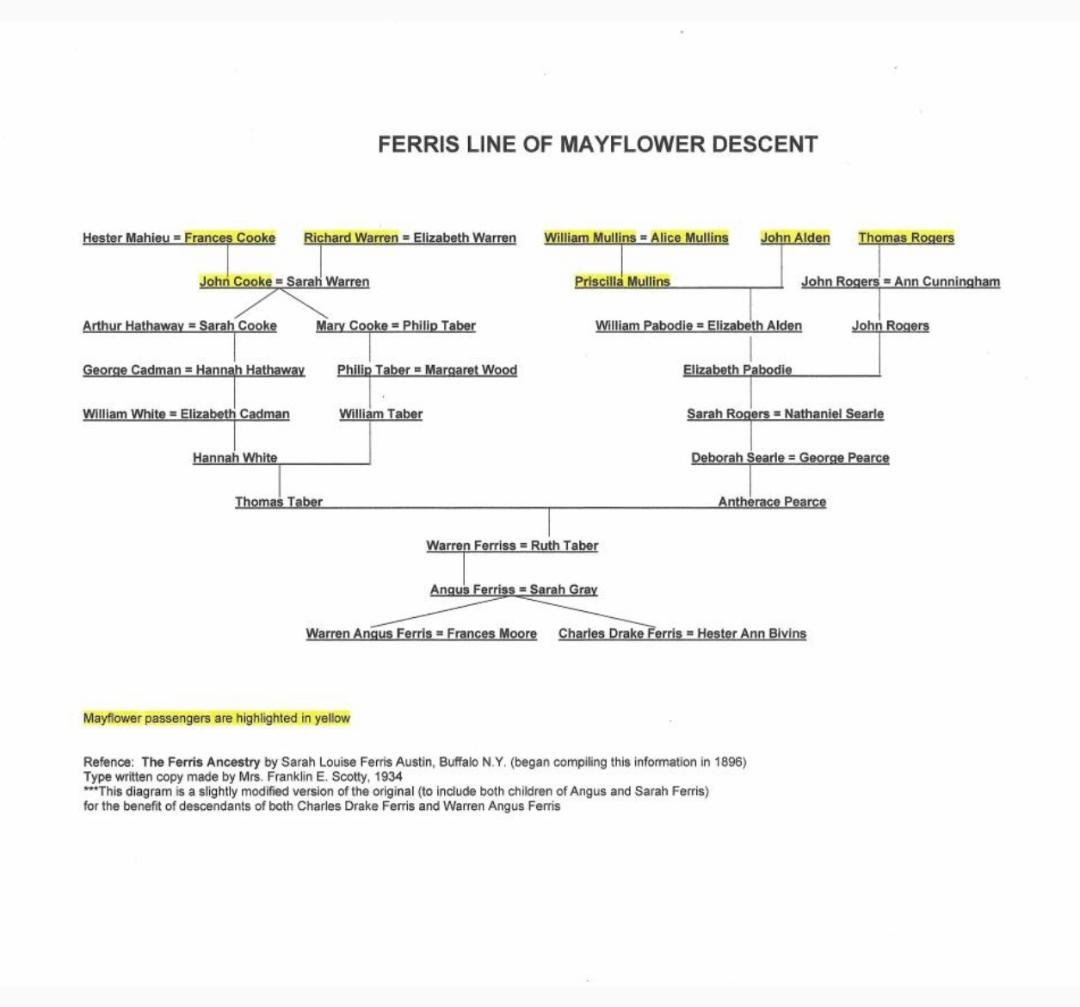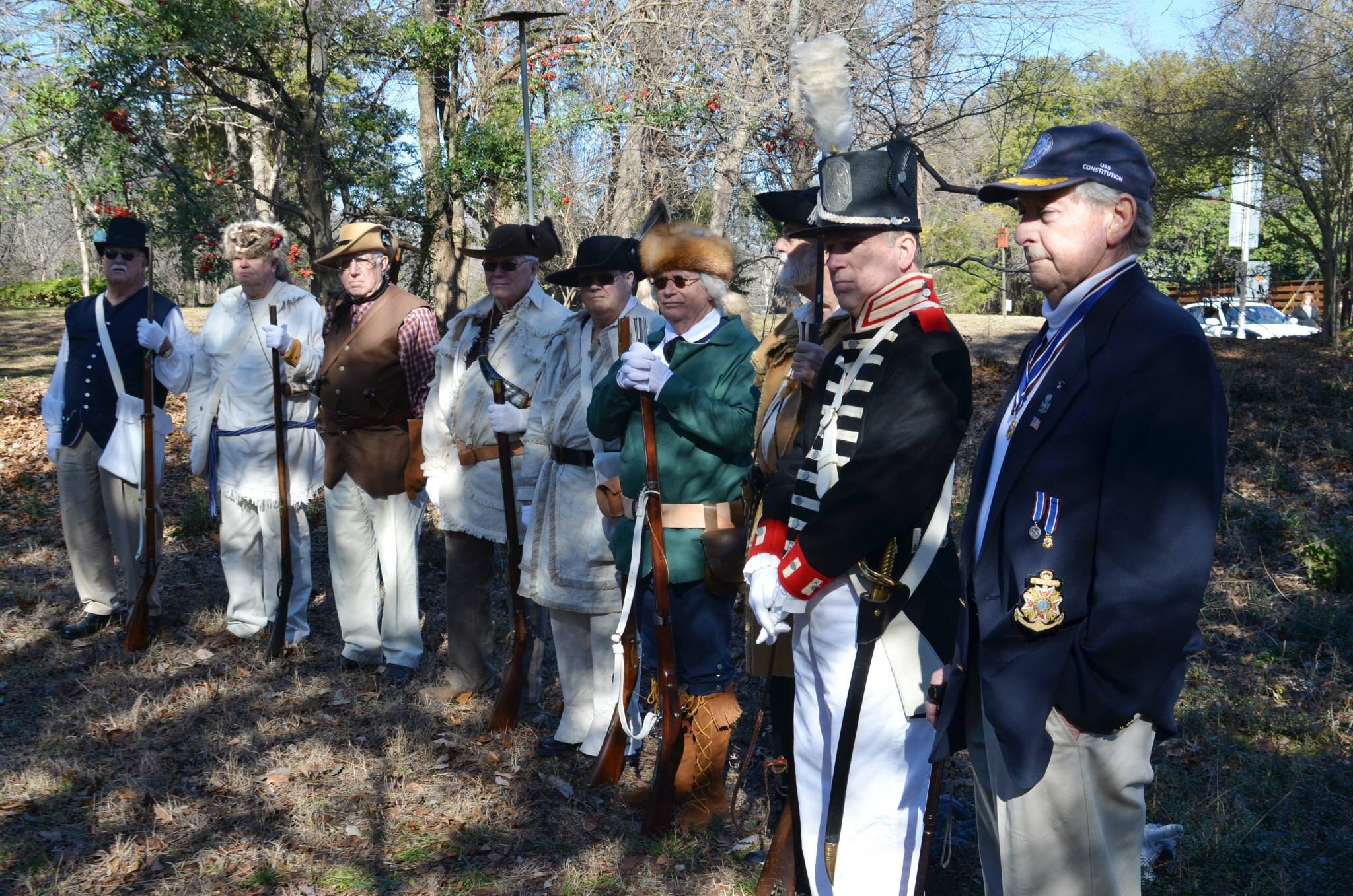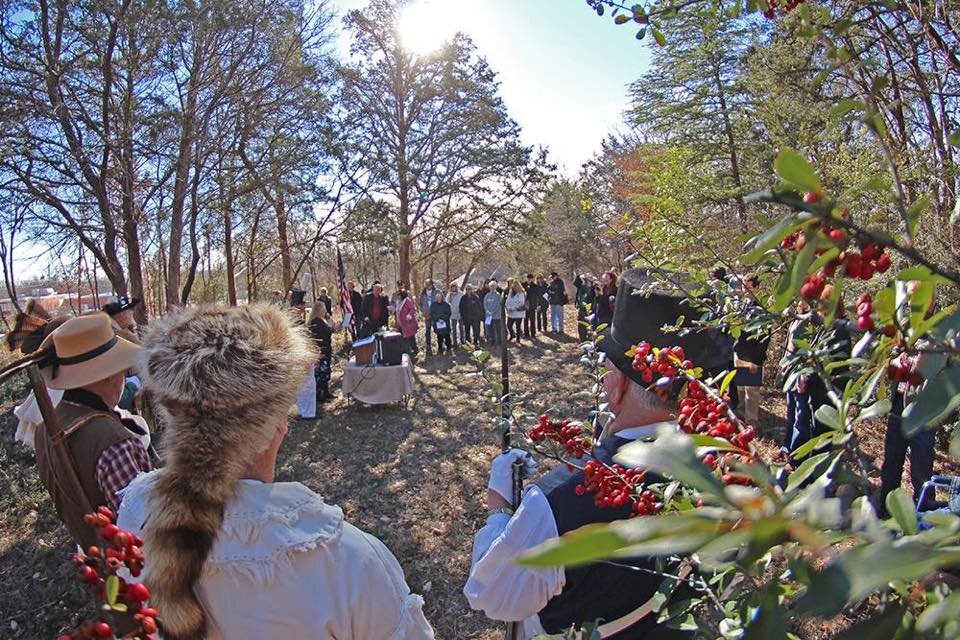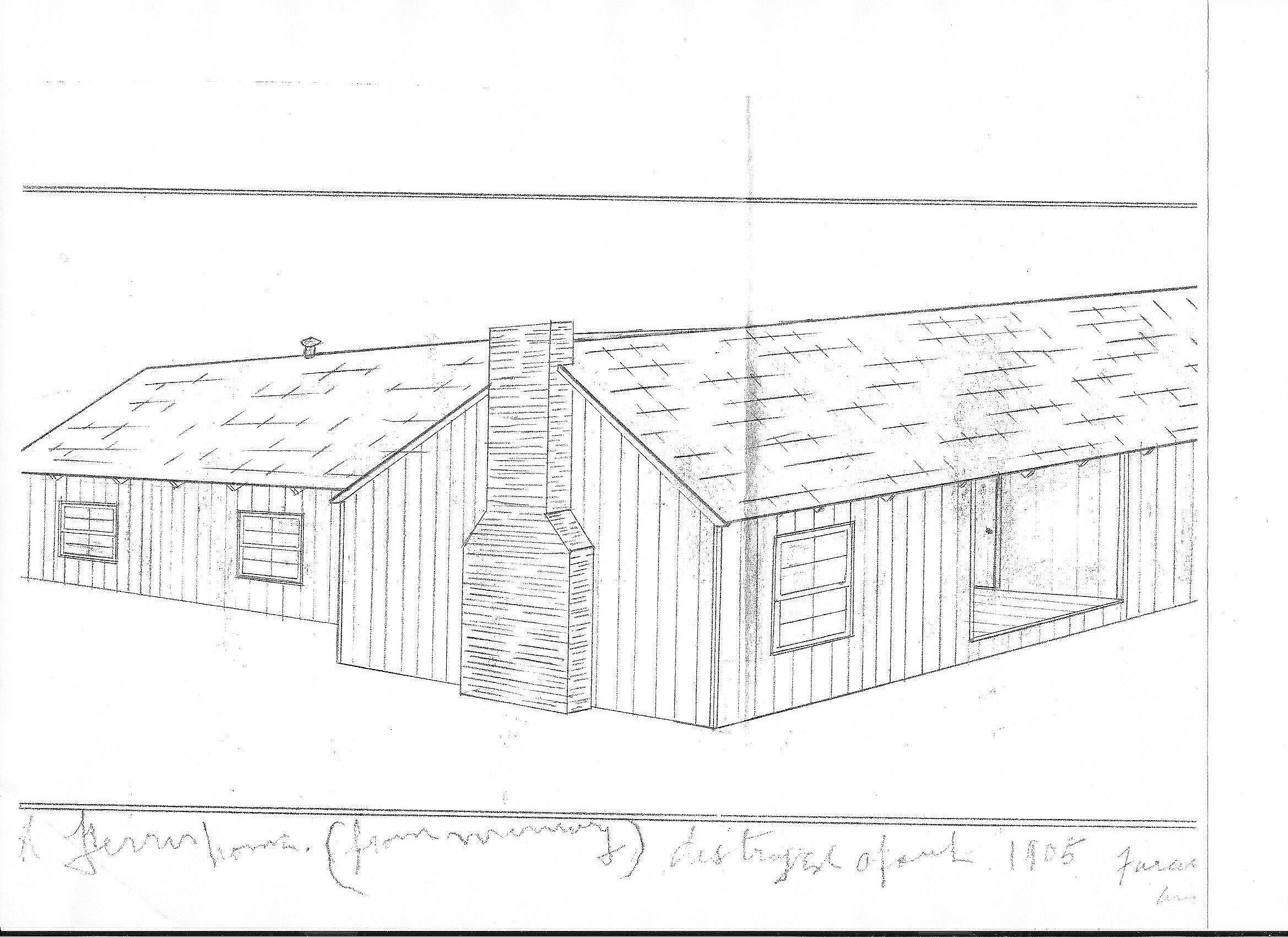Christine determined to prove to the Sons of the Republic of Texas that Warren Ferris’s younger brother, Charles Drake Ferris, fought at the Battle of San Jacinto on April 21, 1836. Charles Ferris’s name does not appear on the official veterans list of that decisive battle and he did not receive donation land due to those veterans. Christine knew the SRT had rejected Charles, but she decided to write to them in hopes that they would be persuaded to add his name to the list.
Circumstantial evidence presented by Christine included family letters, published contemporary accounts, evidence from the historical record, and Charles Ferris’s own writings which carried the convincing flavor of an eye-witness to events at San Jacinto.
Charles D. Ferris and a Buffalo, NY friend Horace Chamberlain arrived in Texas as volunteers in early 1836. After the fall of the Alamo, the historic record shows that Ferris served as a “spy” for Mosley Baker, reporting on Mexican troop movements and later aide-de-camp to Lt. Governor James Robinson. Ferris delivered an urgent dispatch from James Fannin at Goliad to Robinson during the days that the Texian army fell back before the Mexican invasion. Charles Ferris was among those critical of Sam Houston’s inglorious retreat, dubbed the “Runaway Scrape”.
The Ferris family in Buffalo was convinced that Charles participated in the Battle of San Jacinto. His sister Sarah Lovejoy wrote in June 1836, “The last letter we had from Charles was dated the 22nd of April, the day after the battle of San Jacinto and Santa Ana’s capture. He was then well-delighted with the country and in good spirits - he thought the next movement would be to San Antonio to endeavor to retake it”. She also noted that Horace Chamberlain was with Charles at San Jacinto on April 23, a few days after the battle.
Horace Chamberlain’s June 15,1836 letter to his father was published in the Daily Advertiser in Buffalo, NY: “Charles D Ferris, formerly of Buffalo, is here, and belongs to the army - he is aide to Gov. Robinson. He was in the engagement, and narrowly escaped death…Three days after the battle, I visited the field, which was literally covered for ten miles with the dead…” In his letter, Chamberlain describes Charles’s hand-to-hand combat with a Mexican soldier. Having been thrown from his horse, dodging bullets and bayonet, Ferris killed the foe with his rifle butt.
Following the battle, in May 1836, Charles Ferris was commending by Lt. Gov. Robinson in a letter of introduction to Gen. Thomas J. Rusk as a “young man of classical education and morals, habits, and tried valor.”. This a month after San Jacinto.
On his return to Buffalo in the fall of 1836, Charles published in the Western Literary Messenger a tribute to Juan Almonte’s conduct at the Battle of San Jacinto. Almonte, Santa Anna’s aide-de-camp, acted with cool courage according to Ferris. As the battle turned into a massacre and Santa Anna fled the field, Almonte raised a white flag of surrender, calming the angry Texans, and saving many lives. Charles Ferris’s moving descriptions of the horrors of the furious battle and the admirable behavior of Almonte have the earmark of an eye-witness account.
Charles D. Ferris’s name did not appear on Sam Houston’s list of men at San Jacinto or subsequent lists in 1875 and 1883. Although he did not receive donation land due to veterans of San Jacinto, the family of Charles Ferris was awarded a 960 acre land grant for his service in the Texas Army. Louis W. Kemp investigated omission of names of deserving men in 1906; some names were added but not that of Ferris. Kemp admitted that the list was probably incomplete. Omissions were possibly due to loss of documents. Some of the archives of Texas were lost during moves from Columbia to Washington-on-the-Brazos, from Harrisburg to Austin. In 1845, the Treasury Office burned and muster rolls were lost.
The Sons of the Republic of Texas did not respond to Christine Cohen’s argument. Still she believes that that the evidence proves that Charles Ferris did participate in the battle that decided Texas independence. What do you think?
Fannin or The Massacre of La Bahia
A Poem by Charles Drake Ferris
What means that dark cloud, overhanging the vale;
And those soft mournful sounds that I hear in the gale!
Tell me why the rejoicings of liberty cease,
And those sobs of regret break the stillness of peace?
Oh say! What can thus like a funeral pall
Wreathe sorrow and stillness alike over all!
’Tis Nature and Texas commingling their grief
For the loss of a gallant and favorite Chief.
Jehovah himself, from his throne in the sky,
And the hosts of bright seraphs and angels on high,
From those scenes of delight in the regions above,
Sympathise in our grief for the hero we love.
They heard the wild shouts that arose from the plain
Where the heroes of Georgia with Fannin were slain;
And their blood gushing torrents of death and despair,
Rose aloft to the Lord on the pinions of air.
Hushed at once were the sounds of devotion and praise,
For the highest archangel was struck with amaze;
As those currents of crimson arose from below,
Supplicating to God for revenge on the foe.
Soft and sweet was the halo of grief that o’ersspread
The fair shadowy forms of the time-honored dead,
And melting indeed was the holy appeal
As they held up their hands, and their wounds did reveal.
From hell’s dark abyss, the black caverns of night
At that moment arose the shrill sound of delight,
Triumphant, terrifick, that terrible yell
From the turrets of Heaven, was reechoed in Hell.
Sublime was the wrath that o’reshadowed His brow
As the echoing thunder repeated his vow.
That the fruits of a vengeance as deadly and deep
As our foes had deserved, they bitterly reap.
Brave Texians! To you the direction was given
To redress your own wrongs, and redress those of Heaven;
To the Plains of Jacinto ye gallantly moved,
Where the vengeance of God was performed and approved.
Like his brother Warren Ferris, Charles D. Ferris tried his hand at writing poetry. This moving poem was never published. It was rejected by the publisher as too emotional. They also objected to the idea that God approved the Texians’ actions of revenge for the Alamo and Goliad taken at San Jacinto.
Written by Susanne Starling from material provided by Christine Cohen.






































































